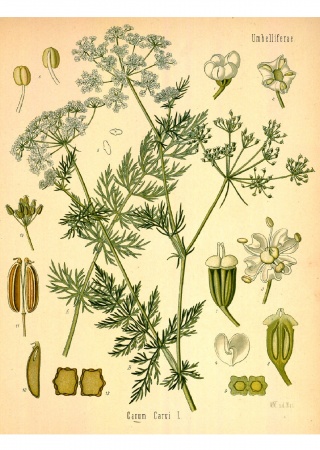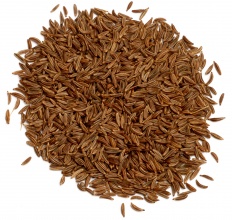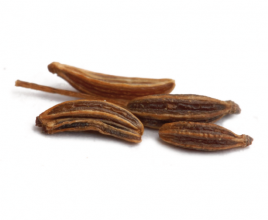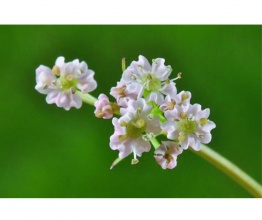Caraway
- …during the Middle Ages, people believed that caraway guarded against black magic, and drove away evil spirits and demons?
- …caraway is used in the manufacture of the liqueur Eccau? The base alcohol is made from wheat, but caraway oils are added for flavor.
- …young caraway leaves are good to eat, and they both look and taste like parsley?
- …caraway aids milk production for nursing mothers?
- …caraway is addictive?
- …in mountainous regions of Europe, it was a custom to put a pot of boiled caraway under a child's crib, to keep it quiet?
- …caraway as a spice is the dried seeds, whole or ground, of the herb Carum carvi?
Quick pork kidneys
500 g kidneys
50 g lard
1 onion
1 tablespoon crushed caraway seed
1 teaspoon ground pepper
1 tablespoon white flour, salt
Cut cleaned kidneys into 1 cm thick slices, roll in mixture of flour and pepper, and sprinkle with caraway. Heat lard, add onion and sauté kidney slices 7-10 minutes on high heat. Salt to taste, remove kidneys from pan and add small amount of water to juice. Serve with potatoes or with rice, bread and salad.
Caraway is among the oldest spices of all. It has been found in circular Neolithic henges, from 3,000 BC. The Ebers papyrus from around 1500 BC contains a list of medicinal and spice preparations, where caraway is first on the list. It is even recorded on clay tablets from Babylon. Proofs of its use are known from antiquity and the Middle Ages. Its origin is in the temperate countries of Asia. Today it grows wild all over Europe, North America, the Near East and India. The English name "caraway" comes from the Arabic name "karawiya".




